- News
- Reviews
- Bikes
- Accessories
- Accessories - misc
- Computer mounts
- Bags
- Bar ends
- Bike bags & cases
- Bottle cages
- Bottles
- Cameras
- Car racks
- Child seats
- Computers
- Glasses
- GPS units
- Helmets
- Lights - front
- Lights - rear
- Lights - sets
- Locks
- Mirrors
- Mudguards
- Racks
- Pumps & CO2 inflators
- Puncture kits
- Reflectives
- Smart watches
- Stands and racks
- Trailers
- Clothing
- Components
- Bar tape & grips
- Bottom brackets
- Brake & gear cables
- Brake & STI levers
- Brake pads & spares
- Brakes
- Cassettes & freewheels
- Chains
- Chainsets & chainrings
- Derailleurs - front
- Derailleurs - rear
- Forks
- Gear levers & shifters
- Groupsets
- Handlebars & extensions
- Headsets
- Hubs
- Inner tubes
- Pedals
- Quick releases & skewers
- Saddles
- Seatposts
- Stems
- Wheels
- Tyres
- Health, fitness and nutrition
- Tools and workshop
- Miscellaneous
- Buyers Guides
- Features
- Forum
- Recommends
- Podcast
review
£4,400.00
VERDICT:
Fast, sweet-handling bike with great comfort levels, but I'd like some control over the spring rate
Handling unaffected by rough roads at speed
Ultegra Di2 groupset is faultless in use
No lockout on Future Shock, which means it bounces under hard efforts
Weight:
8,410g
Contact:
At road.cc every product is thoroughly tested for as long as it takes to get a proper insight into how well it works. Our reviewers are experienced cyclists that we trust to be objective. While we strive to ensure that opinions expressed are backed up by facts, reviews are by their nature an informed opinion, not a definitive verdict. We don't intentionally try to break anything (except locks) but we do try to look for weak points in any design. The overall score is not just an average of the other scores: it reflects both a product's function and value – with value determined by how a product compares with items of similar spec, quality, and price.
What the road.cc scores meanGood scores are more common than bad, because fortunately good products are more common than bad.
- Exceptional
- Excellent
- Very Good
- Good
- Quite good
- Average
- Not so good
- Poor
- Bad
- Appalling
The Roubaix Comp Ultegra Di2 is Specialized's definition of the all-round race bike, taking the aero advantages and positive handling of its Tarmac while adding the damping effect of the Future Shock to allow you to maintain a high pace even over the roughest of roads. It's a great all-round package and a fun bike to ride, but for this kind of money I'd really like to see the front-end 'lock out' found on more expensive models in the range.
The ride
For a disc brake-equipped road bike, the Roubaix Comp is relatively light at 8.41kg (18.5lb) and that is noticeable out on the roads, especially when accelerating hard or in the hills.
> Find your nearest dealer here
With a frame that's stiff in the right places, the Roubaix is responsive when you want it to be, and with its steep, race geometry you can really exploit its pace, not only on the straights but on the flats too.
Specialized says that this new frame design is just as aero as its Tarmac race bike and it certainly feels fast when you find yourself with a long ribbon of tarmac stretching out ahead of you. The geometry allows you to get a decent crouched position and I could keep the Roubaix tapping along at 20-25mph without feeling like I was having to dig too deep for the sake of the extra couple of miles an hour.
The Roubaix was designed with the Spring Classics in mind, the Tour of Flanders and Paris-Roubaix most notably, and all their sections of cobbles or Belgian pavé.
The Future Shock is a sprung damper that allows for 20mm of travel between the head tube and the stem, and on the whole works pretty well. It takes care of broken tarmac surfaces and small potholes, and thanks to a reasonably firm damping rate it keeps you in contact with the road at all times without you feeling like the front end is bouncing away too much.
This means the Future shock doesn't affect the feedback levels from the tyres either, which was my first concern before I started to ride the Roubaix. For me, comfort on a road race bike is far from my primary concern, it's probably not even in the top five. I want stiffness, responsiveness, precise steering and great levels of feedback, and normally by sticking some form of squidgy suspension in somewhere you are going to detract from some of those if it hasn't been well designed.
Specialized has got it spot on. The handling through fast bends and on high-speed descents hasn't been affected and you can really feel what the front tyre is up to thanks to the firmness of the Future Shock. It's doing just enough to take the edge off, especially when working alongside the flexible Pavé seatpost.
When David Arthur was testing the top-end S-Works version he, too, found the Future Shock to be a very impressive addition to the overall ride quality and speed of the bike.
That model came with the Future Shock 2.0, which has an adjustment wheel in place of the stem cap so you can control the firmness of the suspension. After living with the bike for a while he found it fine just to leave it on its softest setting, but I would have preferred the choice.
The Roubaix Comp, you see, comes with the Future Shock 1.5, which lacks the adjustment. When I found myself accelerating hard away from junctions and traffic lights or when pushing hard out of the saddle when climbing, the bobbing of the handlebar really began to get on my nerves. Braking hard before a sharp bend on a fast descent, I could also feel the bar dip which was a bit disconcerting.
I'm a good 10kg heavier than David, which is possibly why it affected me more – that's a fair bit more weight being added to the front of the bike – and there is also the possibility of slightly different riding styles.
That aside, the benefits of the Future Shock outweigh the negatives. Out on longer rides of four to five hours I did notice less fatigue in the wrists and hands, yet when I was riding at a steady state in the saddle the Roubaix still felt like that firm and responsive bike I want to have beneath me. It really is the best of both worlds.
Frame and fork
This latest version of the Roubaix frame has had quite a makeover. It's lost weight over previous versions and has those aerodynamic tweaks I mentioned earlier.
The head tube has been cinched in at the waist, and the down tube and seat tube have been redesigned, as have the seatpost and the fork blades. According to Specialized it has shown an improvement of 24 seconds over a 40km distance compared to the previous Roubaix in the wind tunnel.
The seatpost uses an internal wedge design rather than an external seat clamp, making the rear end smoother and allowing the post to be clamped much lower for more flex and comfort.
Stiffness is absolutely spot on, so the fact that the Roubaix Comp uses a Fact 10r grade carbon fibre rather than the top end 11r found on the S-Works isn't really a disadvantage. Stamping on the pedals gives no feeling of flex whatsoever around the bottom bracket area, and traditionalists will be pleased to see a threaded BB screwed into the frame.
When it comes to geometry, the Roubaix sits much more towards the performance end of the scale than that of an endurance machine. On this 56cm model you are getting a 563mm effective top tube length, 73.5-degree head and seat angles, plus a sub-metre wheelbase to keep the bike nimble.
The head tube is only 143mm tall but with the inclusion of that Future Shock the stack sits at 605mm, about 25mm higher than most bikes this size. Most people are running a couple of spacers under their stem, though, so it makes little difference to real world riding.
The reach is a pretty typical 384mm, and frame sizes are available from 44 to 64cm so a decent spread.
The Roubaix is a race bike so don't expect to find mounts for mudguards or racks, but it will now accept tyre widths of up to 33mm.
There are two sets of bottle cage mounts in the usual places, plus you are getting 12mm thru-axles front and rear, and flat mount callipers.
Finishing kit
The Roubaix Comp is available with a mechanical Ultegra groupset for a grand less than this one, but if you want electronic shifting then this is the model for you, with a full Ultegra Di2 build.
The braking and shifting is brilliant and so much more refined than earlier versions. The lack of mechanical gubbins in the gear levers mean the hoods only need to contain the hydraulic reservoir, so their overall size is practically the same as the svelte rim brake versions and comfortable to ride over long distances.
Taking into account its rough road capabilities, Specialized has sensibly specced the Comp with a 50/34 chainring option and an 11-34 cassette, which gives a decent spread of gears for the majority of terrain.
It has also included the Ultegra RX Di2 rear mech which has a clutch mechanism to stop the chain flailing around and damaging the chainstay.
All the wires and hoses are passed internally through the frame and fork, which not only keeps thing clean and aero but also allows the neat integration of the Di2 control panel into the down tube.
For braking, Specialized has gone for 160mm Ice-Tech rotors front and rear which supply more than enough stopping power along with plenty of modulation. They can squeal a bit when new, especially when they are cold, but do quieten down once bedded in.
As I've mentioned, the Roubaix uses the own brand Pavé seatpost which is designed to promote flex towards the top for a bit of extra cushioning. The internal wedge clamping design works well, and I had no issues with slippage.
The Future stem is designed to work with the Future Shock, so it's no surprise that it's another own brand part, as is the Adventure Gear Hover handlebar. Rather than a standard drop bar like that found on the majority of race bikes, this is a flared riser bar more often found on a gravel bike.
The tops rise either side of the stem clamp for a slightly more upright position, and the drops have a slight flare so the bar is wider at the bottom than it is at the hoods. This gives more stability when travelling fast in the drops over rough terrain thanks to the wider stance of your wrists, without affecting your road position when on the hoods.
I found Specialized's Body Geometry Power saddle a comfortable place to be. The slender profile and firm padding give a supportive ride, and thanks to the Pavé seatpost it can get away without being too squidgy. Its short shape suits riding hard in the drops as well, as there is basically no nose section to it.
Wheels and tyres
You'd perhaps expect higher spec wheels on a £4,400 bike than the DT Swiss R470 Discs, being more of an entry-level road/CX or gravel wheelset, but they are plenty robust which is often more important if you are spending a lot of time on rough rides like Paris-Roubaix.
I took the Roubaix over some hardpacked byways to give the wheels a bit of a test and they stood up to the knocks and bumps without any real issue. They continued to spin true and the hubs run smoothly after a fair few wet rides.
The rims are wide, which suits the 28mm Specialized Turbo Pro tyres, ballooning them out a little into a nice round shape rather than the lightbulb profile you get on slimmer road rims.
The tyres themselves roll pretty well, and certainly felt quick enough on the majority of my rides. Grip is impressive too – the compound has a little bit of tackiness which gives a little extra adhesion in the bends, especially in the dry, and when it was wet they didn't feel overly sketchy.
They seem pretty robust as well. I didn't pick up any punctures or cuts over the test period, even with the farmers blitzing the local hedges and leaving it on the carriageway. The only real downside is that they aren't tubeless-ready even though the rims are, so if you want to go sans tubes they'll need to be upgraded.
Value and pricing
There aren't many bikes out there for the road that use any form of suspension, but some brands go down other routes to cancel out vibration.
Bianchi uses Countervail technology which is a viscoelastic resin embedded into the carbon fibre of the frame and fork. It doesn't offer anything like the damping effect of the Future Shock but does tame a rough ride.
The Infinito CV Disc Ultegra comes in slightly more expensive than the Roubaix, at £4,475, and that is with a mechanical groupset rather than Di2.
> Buyer's Guide: 16 of the best disc brake endurance road bikes
Another bike I'm currently testing is the Merida Mission 7000-E. It's a 'road plus' bike, straddling the borders of road and gravel with its large tyre clearances and endurance-based geometry.
Initial rides are showing it to be very quick on the road, and comfortable too. The similar Ultegra Di2 build will only set you back £3,600, and it's 200g lighter.
Conclusion
Overall, I like the idea of the Roubaix. For the majority of the training rides I do the Future Shock works well, and on long rides I certainly felt less fatigued across my contact points. That said, since the Roubaix has gone back I haven't exactly been pining for a return to suspension. If comfort is your top priority, though, followed by performance, the Roubaix Comp Di2 could be right up your rough and potholed street, although I would like to be able to lock out the Future Shock.
Verdict
Fast, sweet-handling bike with great comfort levels, but I'd like some control over the spring rate
road.cc test report
Make and model: Specialized Roubaix Comp Ultegra Di2 2020
Size tested: 56cm
About the bike
List the components used to build up the bike.
Specialized lists:
FRONT WHEEL DT R470 Disc
REAR WHEEL DT R470 Disc
INNER TUBES Presta, 48mm valve
FRONT TYRE Turbo Pro, 700x28mm
REAR TYRE Turbo Pro, 700x28mm
CRANKSET Shimano Ultegra R8000, HollowTech 2, 11-speed
CHAINRINGS 50/34T
BOTTOM BRACKET Shimano Ultegra, BBR60
SHIFT LEVERS Shimano Ultegra Di2 Disc R8070
FRONT DERAILLEUR Shimano Ultegra Di2 R8050, braze-on
REAR DERAILLEUR Shimano Ultegra RX, RX805
CASSETTE Shimano Ultegra, 11-speed, 11-34t
CHAIN Shimano Ultegra, 11-speed
FRONT BRAKE Shimano Ultegra, Hydraulic
REAR BRAKE Shimano Ultegra, Hydraulic
HANDLEBARS Specialized Adventure Gear Hover, 103mm drop x 70mm reach x 12° flare
TAPE Roubaix S-Wrap
STEM Future Stem, Pro
SADDLE Body Geometry Power, Hollow Cr-Mo rails, 143mm
SEATPOST S-Works Pave
SEAT BINDER Hidden drop clamp
Tell us what the bike is for and who it's aimed at. What do the manufacturers say about it? How does that compare to your own feelings about the bike?
Specialized says, "If you need more proof that faster is smoother than six wins at the Paris Roubaix, then look no further that the all new Roubaix Comp. Up until now, making a bike smooth and easy to ride has come with its compromises, that is until now. With the re-designed Roubaix and its radical new Future shock 1.5, compliance is delivered with out any compromise. We've also added in a new Pavé seatpost to further smooth out those rough sections of road.
"This redesign has made the all new Roubaix just as aerodynamic as the Tarmac, plus its Rider-First Engineered™ frame drops some serious weight. With all these changes you'd question if it was comfortable to ride? While the answer is a firm yes, don't be fooled into thinking it's a cruiser, every change made has been made from a performance point of view.
"To make every penny count, the Roubaix comp comes fitted with Shimano's Ultegra DI2 electronic shifting and their fantastic hydraulic disc brakes, plus it's rolling on DT Swiss R470 disc wheelset and comes as standard with the the all-new S-Works Pavé seatpost, 28mm Turbo Pro tires, and our fan-favorite Power Comp saddle."
The Roubaix Comp is a very good performance race bike that won't leave you battered about by rough surfaces.
Where does this model sit in the range? Tell us briefly about the cheaper options and the more expensive options
There are two Roubaix Comps – it's also available with mechanical Shimano Ultegra for £3,400.
Frame and fork
Overall rating for frame and fork
9/10
Tell us about the build quality and finish of the frame and fork?
It is a very well built frameset, and you can tell from the feedback that the carbon layup has been well considered. It is available in a range of colours too.
Tell us about the materials used in the frame and fork?
The frame is constructed from FACT 10R carbon fibre, Rider First Engineered (RFE), FreeFoil Shape Library tubes, threaded BB, 12x142mm thru-axle, flat-mount disc.
The fork is also carbon fibre, Future Shock 1.5 w/ Smooth Boot, 12x100mm thru-axle, flat-mount disc.
Tell us about the geometry of the frame and fork?
The overall geometry is closer to that of a race bike than an endurance machine when it comes to the angles and tube lengths.
How was the bike in terms of height and reach? How did it compare to other bikes of the same stated size?
Because of the Future Shock being positioned between the stem and head tube, the stack is increased by about 25mm over a normal endurance bike of this size, although when balanced out with the amount of spacers most people run, the bar height will be pretty similar.
The reach figures are similar to other endurance bikes on the market.
Riding the bike
Was the bike comfortable to ride? Tell us how you felt about the ride quality.
The comfort that the Future Shock and Pave seatpost bring to the overall ride is the defining factor of the Roubaix.
Did the bike feel stiff in the right places? Did any part of the bike feel too stiff or too flexible?
Yes, plenty stiff enough. Thanks to the comfort afforded by the Future Shock and seatpost, Specialized has been able to keep the stiffness levels of the Roubaix high, making it great for performance riding.
How did the bike transfer power? Did it feel efficient?
Power transfer through the frame and fork is impressive and feels efficient, although the movement from the Future Shock under hard efforts was a bit disconcerting.
Was there any toe-clip overlap with the front wheel? If so was it a problem?
No, none.
How would you describe the steering? Was it lively neutral or unresponsive? Well balanced.
Tell us some more about the handling. How did the bike feel overall? Did it do particular things well or badly?
The Roubaix isn't quite as sharp as a race bike, but it is more positive and precise than many endurance bikes on the market.
Which components had the most effect (good or bad) on the bike's comfort? would you recommend any changes?
The Future Shock and Pave seatpost take the sting out.
Which components had the most effect (good or bad) on the bike's stiffness? would you recommend any changes?
The Ultegra crankset guarantees that your power isn't wasted.
Which components had the most effect (good or bad) on the bike's efficiency? would you recommend any changes?
The Roubaix comes with a good spread of gears, which means you can be efficient right through the speed range.
Rate the bike for efficiency of power transfer:
9/10
Rate the bike for acceleration:
8/10
Rate the bike for sprinting:
8/10
Rate the bike for high speed stability:
9/10
Rate the bike for cruising speed stability:
8/10
Rate the bike for low speed stability:
8/10
Rate the bike for flat cornering:
8/10
Rate the bike for cornering on descents:
8/10
Rate the bike for climbing:
8/10
The drivetrain
Rate the drivetrain for performance:
9/10
Rate the drivetrain for durability:
8/10
Rate the drivetrain for weight:
8/10
Tell us some more about the drivetrain. Anything you particularly did or didn't like? Any components which didn't work well together?
Ultegra can't really be faulted for its performance and the Di2 shifting works really well. The addition of the clutch rear mech is a nice touch for rough roads.
Wheels and tyres
Rate the wheels for performance:
7/10
Rate the wheels for durability:
8/10
Rate the wheels for weight:
7/10
Rate the wheels for comfort:
7/10
Tell us some more about the wheels.Did they work well in the conditions you encountered? Would you change the wheels? If so what for?
Strong and dependable wheels for taking on rough surfaces, but the performance of the bike would be improved with something lighter yet just as strong.
Rate the tyres for performance:
7/10
Rate the tyres for durability:
8/10
Rate the tyres for weight:
7/10
Rate the tyres for comfort:
7/10
Tell us some more about the tyres. Did they work well in the conditions you encountered? Would you change the tyres? If so what for?
Decent enough all-rounders that don't really excel anywhere, but grip is okay in the wet and dry, and they are pretty robust.
Controls
Rate the controls for performance:
7/10
Rate the controls for durability:
8/10
Rate the controls for weight:
7/10
Rate the controls for comfort:
9/10
Tell us some more about the controls. Any particularly good or bad components? How would the controls work for larger or smaller riders?
With the Future Shock, the comfort levels are some of the best out there.
Your summary
Did you enjoy riding the bike? Yes, for the majority of the time.
Would you consider buying the bike? Probably not, I'd like to be able to lock out the Future Shock.
Would you recommend the bike to a friend? Yes
How does the price compare to that of similar bikes in the market, including ones recently tested on road.cc?
The Roubaix Comp kinds of sits in middle of the price point. The new Merida Mission 7000-E offers a similar ride and build but comes in at just £3,600. As mentioned in the review, though, the vibration-damping Bianchi Infinito CV Disc is £75 more expensive but only comes with a mechanical Ultegra groupset – a Roubaix Comp with that build is over £1,000 cheaper.
Rate the bike overall for performance:
8/10
Rate the bike overall for value:
6/10
Use this box to explain your overall score
A solid, all-round road bike that can take on a bit of the rough stuff too. It comes with a quality frameset and decent spec levels for the money, and the Future Shock certainly isn't a gimmick. I would prefer some control over the damping, though, like that found on more expensive models.
About the tester
Age: 41
I usually ride: This month's test bike My best bike is: B'Twin Ultra CF draped in the latest bling test components
I've been riding for: Over 20 years I ride: Every day I would class myself as: Expert
I regularly do the following types of riding: time trialling, commuting, club rides, sportives, fixed/singlespeed,
As part of the tech team here at F-At Digital, senior product reviewer Stu spends the majority of his time writing in-depth reviews for road.cc, off-road.cc and ebiketips using the knowledge gained from testing over 1,500 pieces of kit (plus 100's of bikes) since starting out as a freelancer back in 2009. After first throwing his leg over a race bike back in 2000, Stu's ridden more than 170,000 miles on road, time-trial, track, and gravel bikes, and while he's put his racing days behind him, he still likes to smash the pedals rather than take things easy. With a background in design and engineering, he has an obsession with how things are developed and manufactured, has a borderline fetish for handbuilt metal frames and finds a rim braked road bike very aesthetically pleasing!





































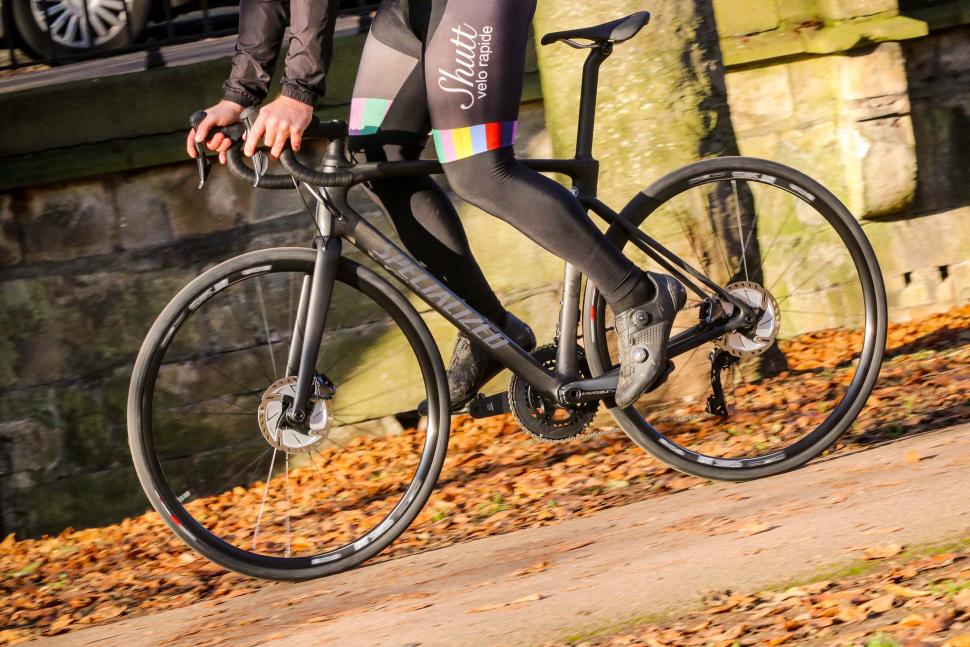

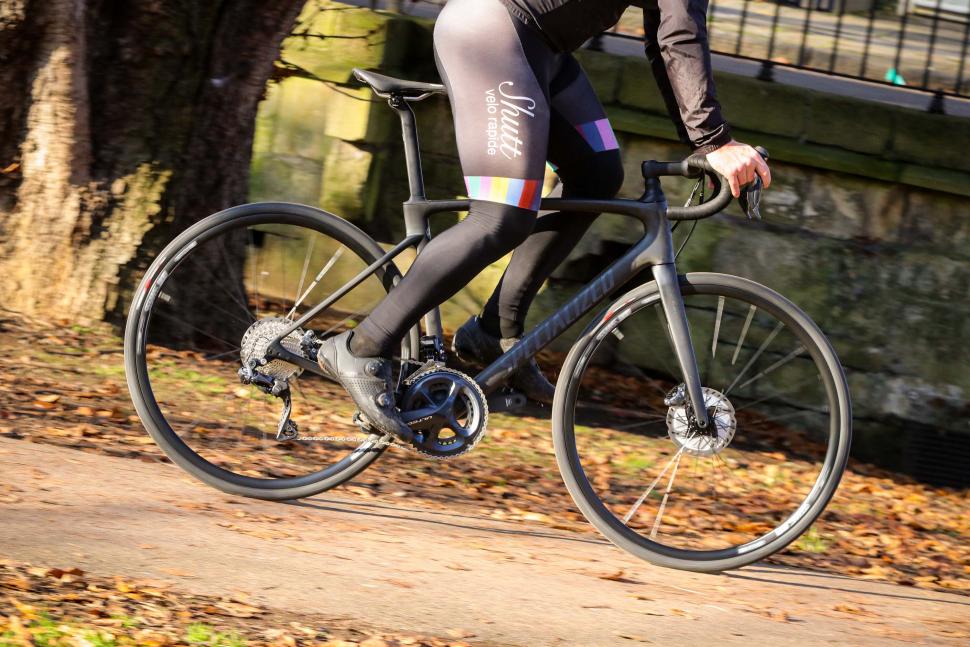





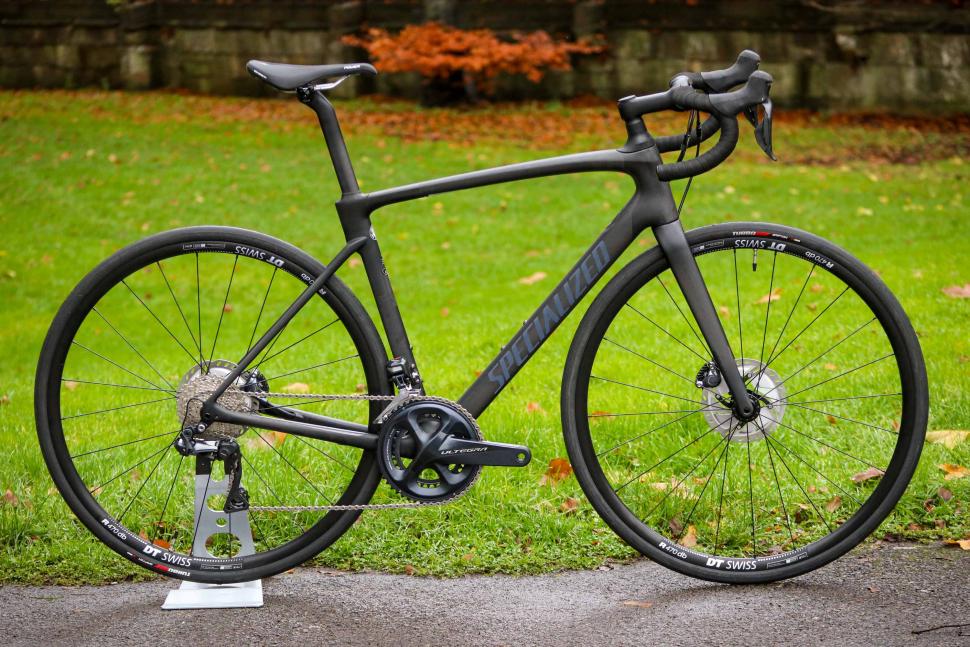
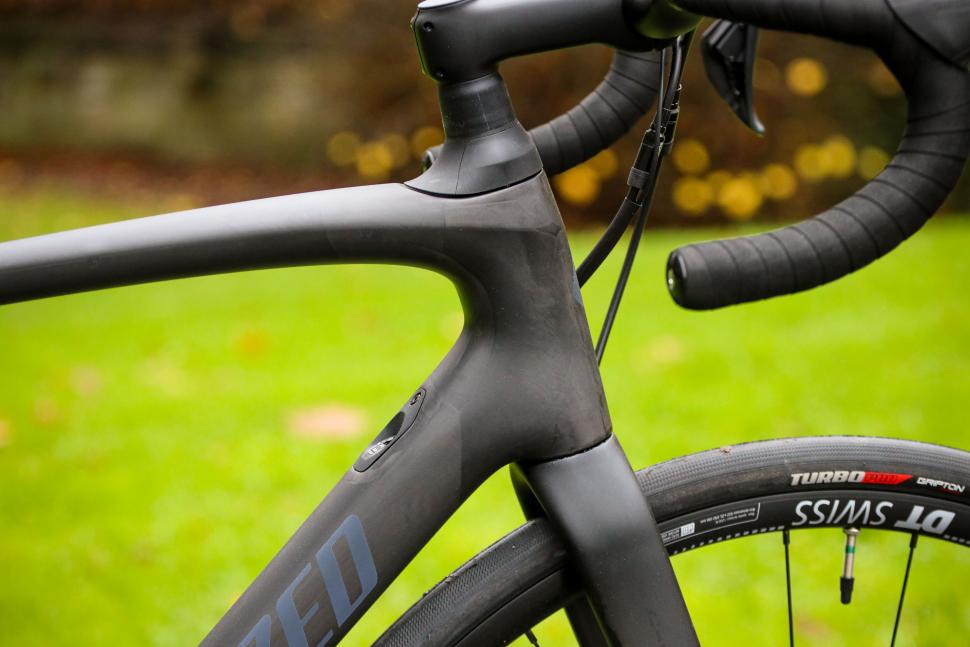
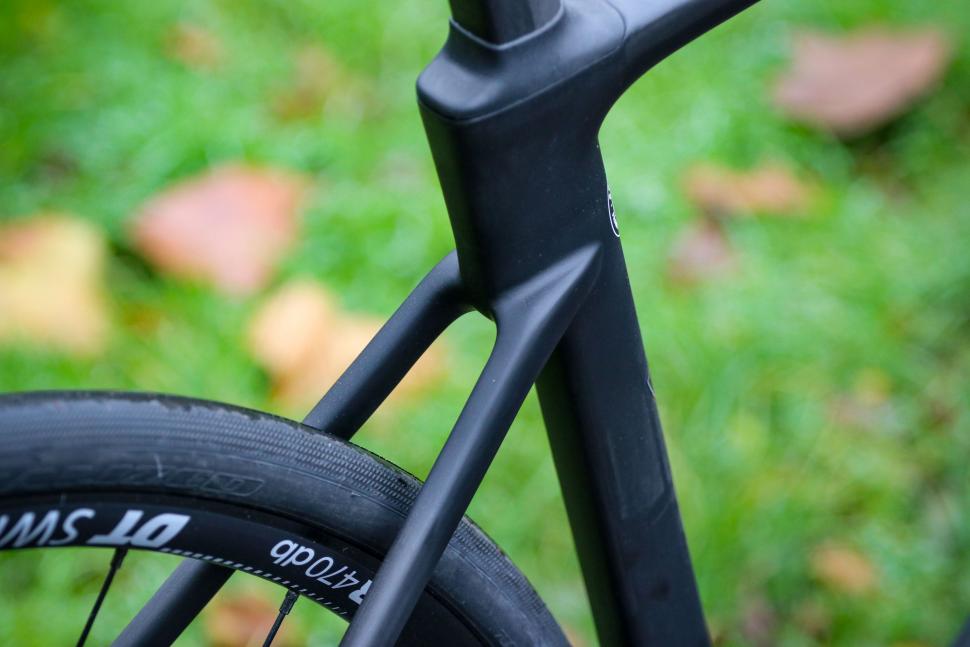
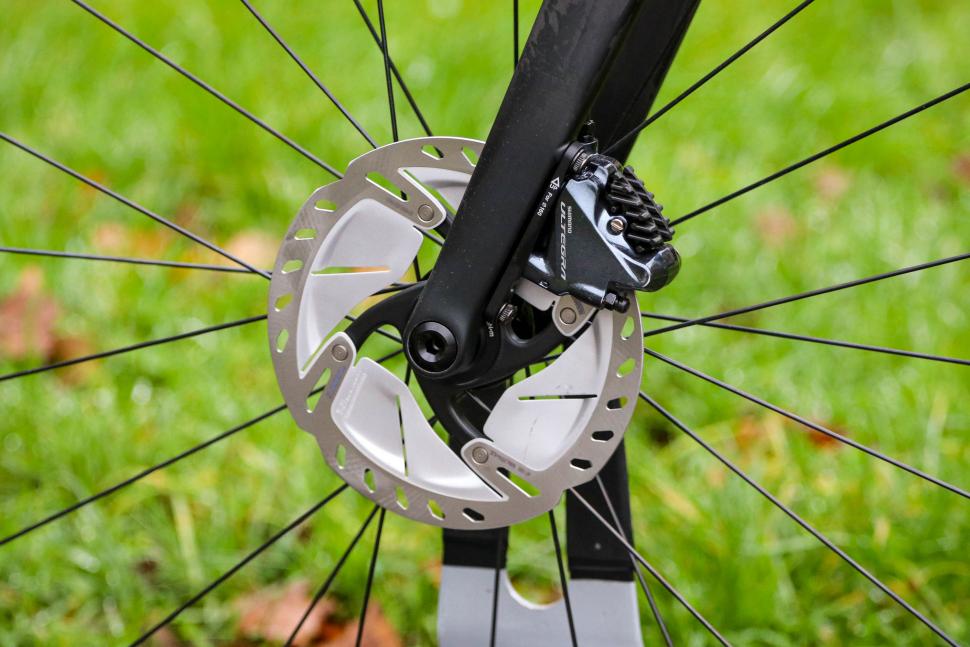
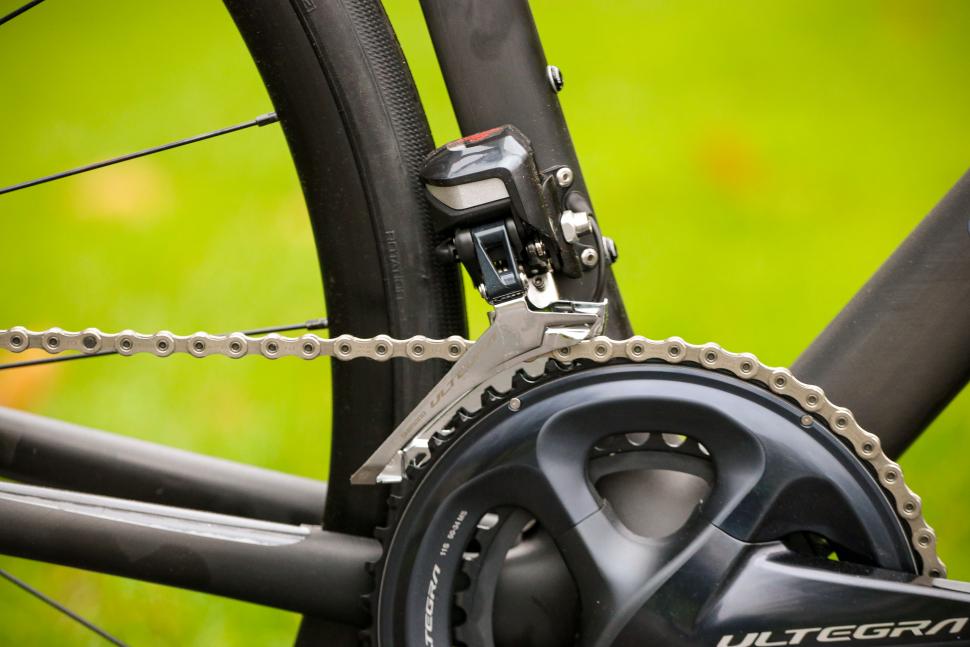
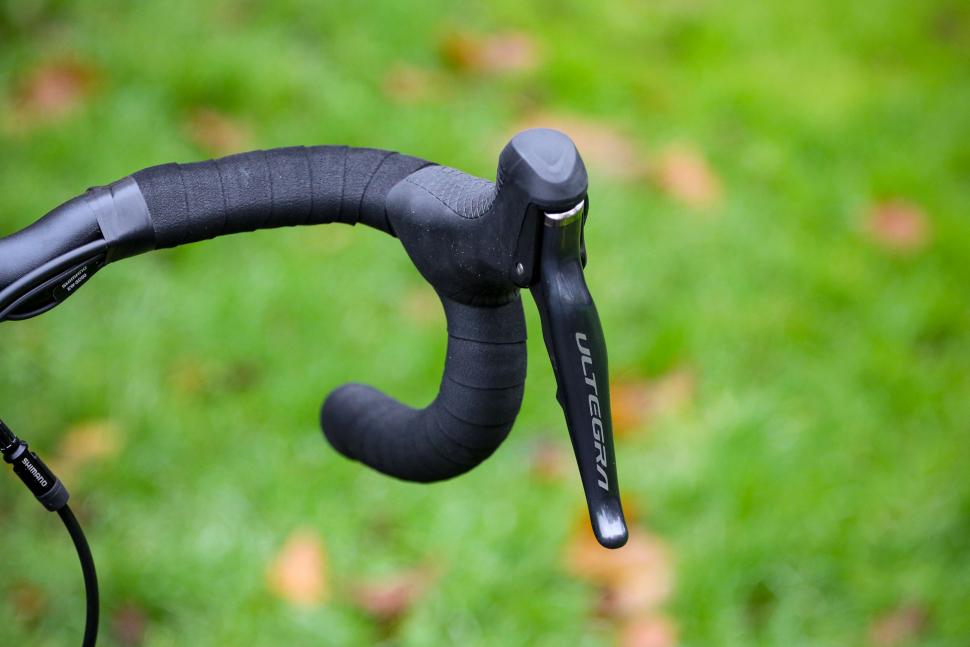

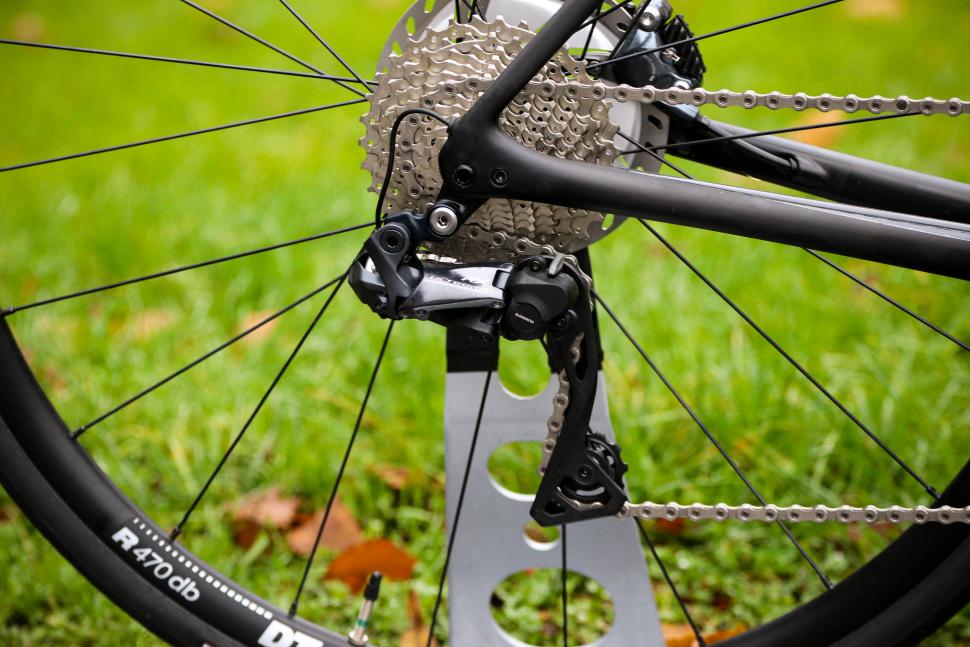

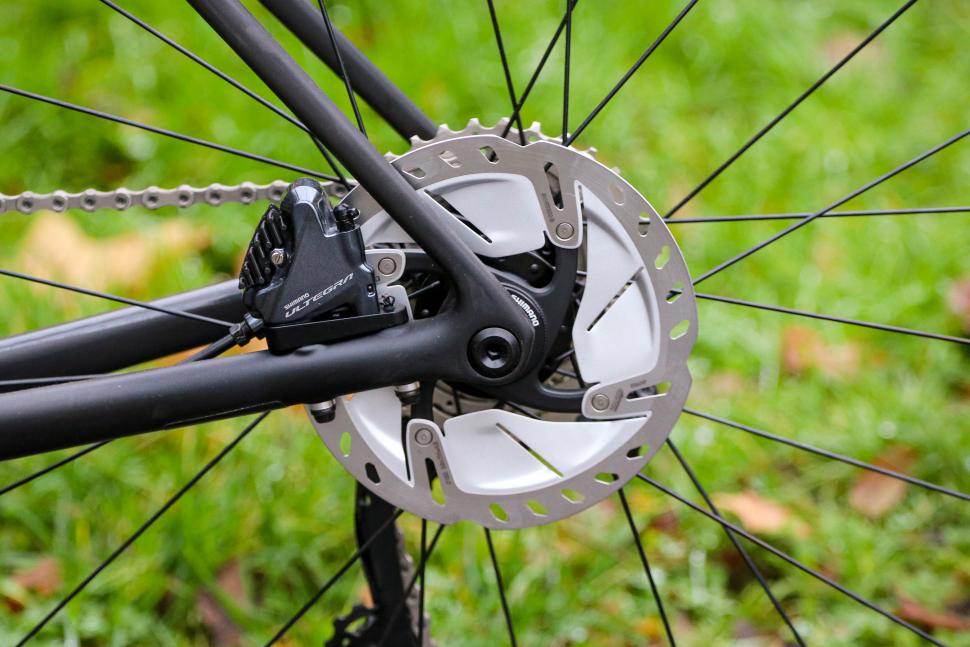
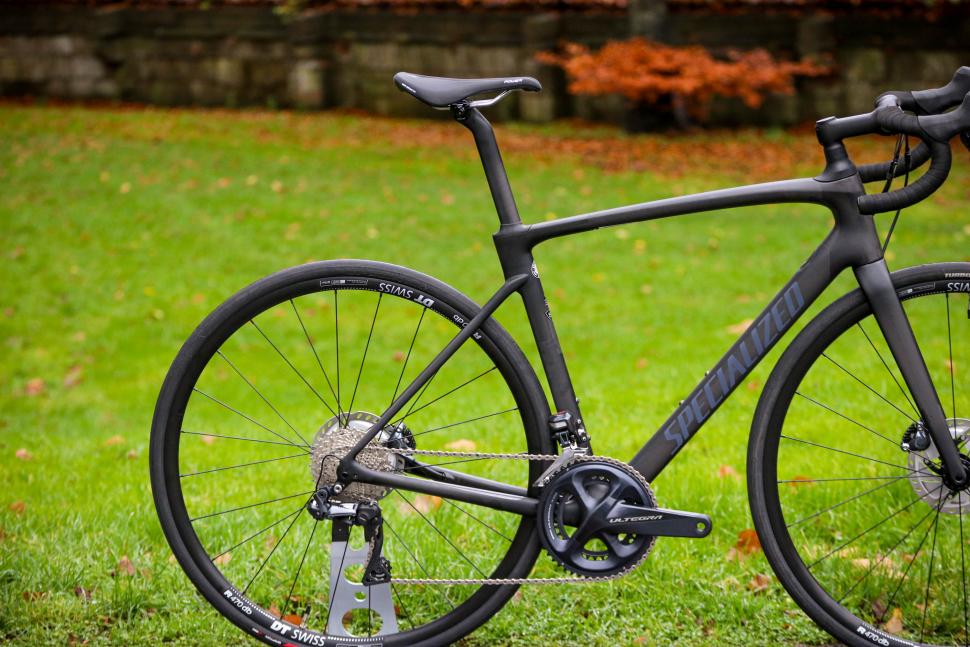
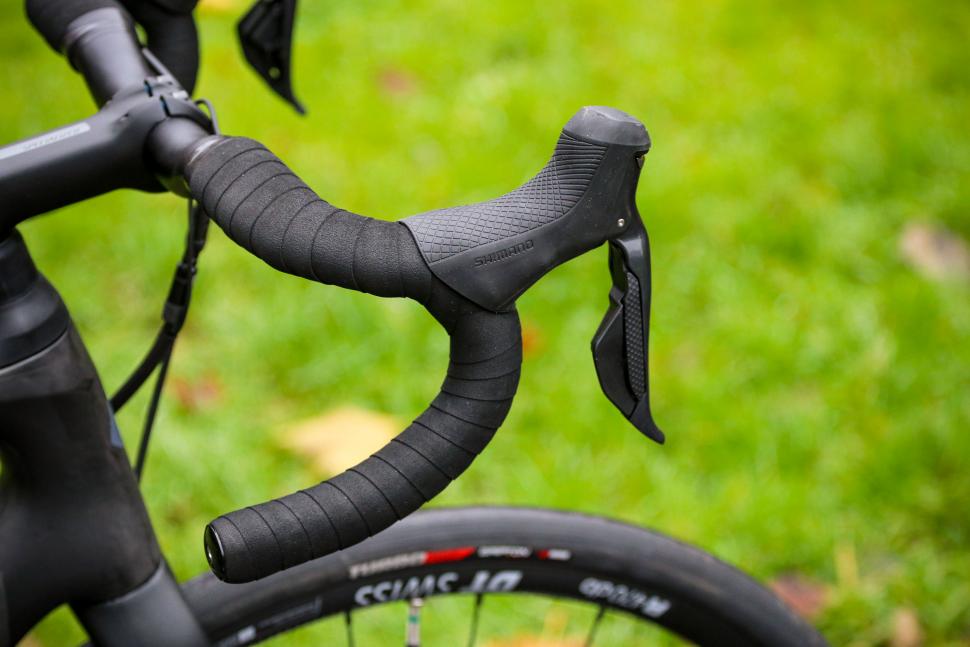
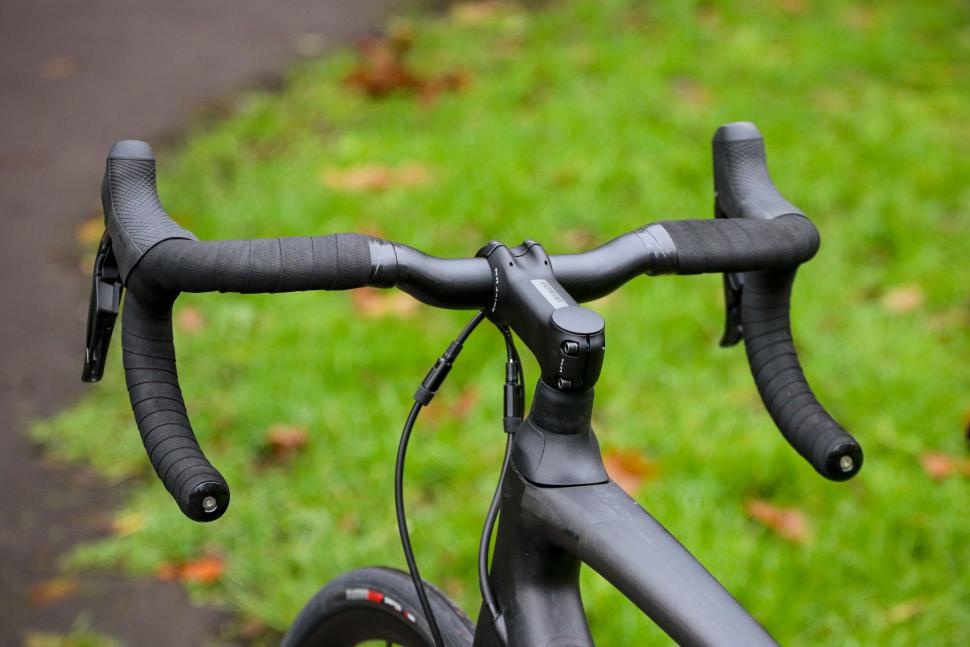

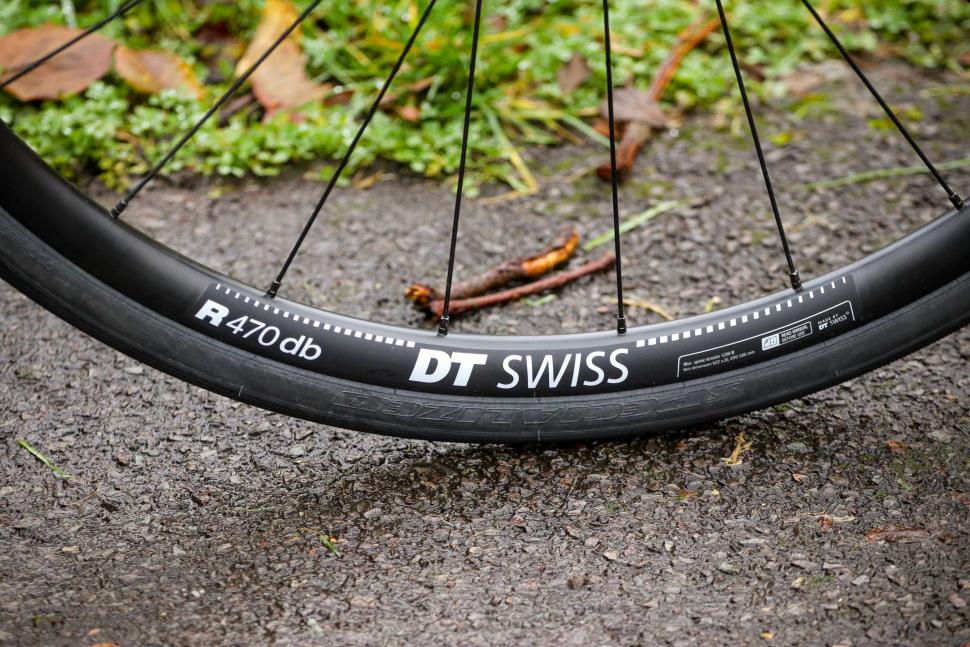


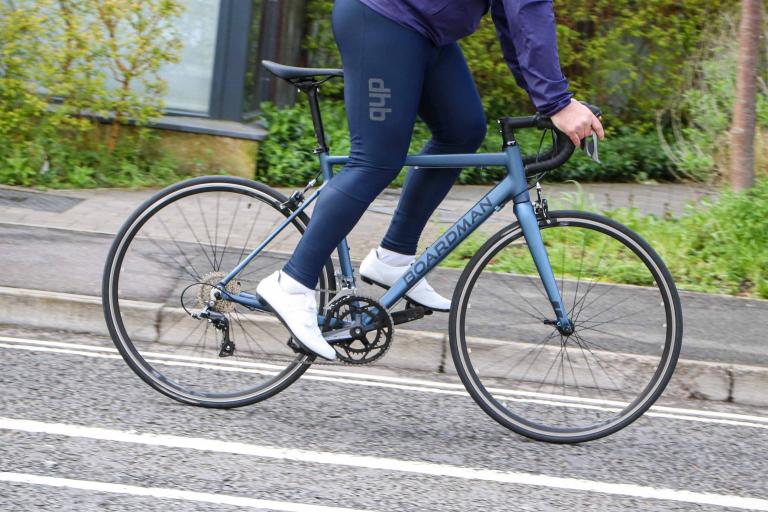
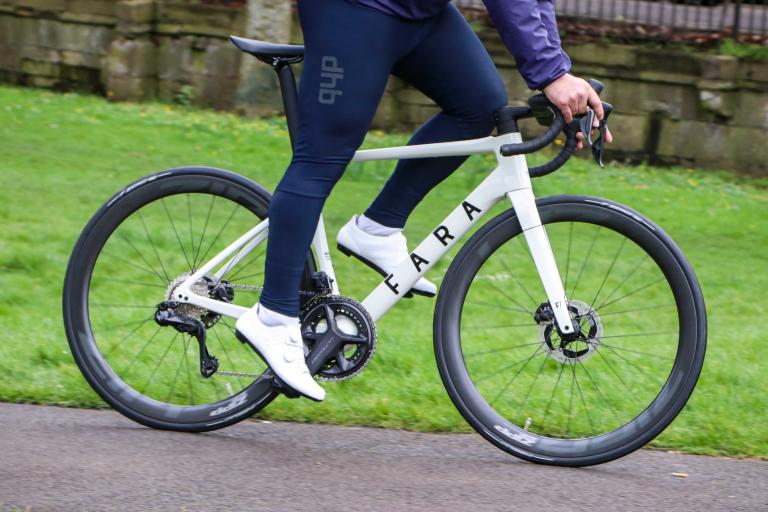
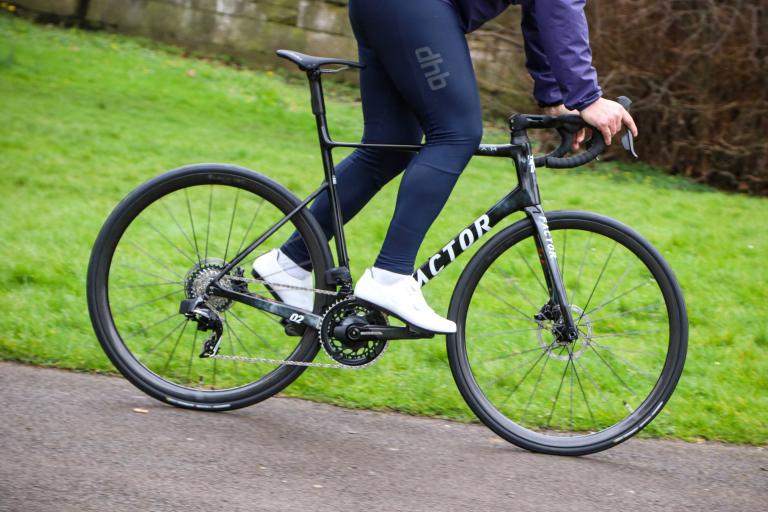
As a former motorcyclist, including a year (many years ago) as a motorcycle courier, and current many thousands of miles a year cyclist in London,...
All part of Rishi's plan to crackdown on the "war against motorists". Political jingoism at it's finest!
"Anecdotally" tyre fitters are reporting EVs wearing out tyres in as little as 10 000 miles, and tyres on my ICE cars are lasting at least 25 000...
Calipers: not apealing.Red Levers: The Most Beatiful Levers In The World ! Gonna work some overtime.
Because what you want are four execs from a company so successful they have just gone out of business.
Suvi is getting paid way too much. Needs a wages review. And quick....
They're not losses - they're "negative profits"!
I would say that a wide neck opening would be fine for many cyclists who, like me, wear a buff when it is chilly. They're a great vfm additional...
Man simultaneously possessing and eating a series of rich cakes decries pastry chefs for supplying unhealthy food......
That's probably cost you over a minute now across all your rides.